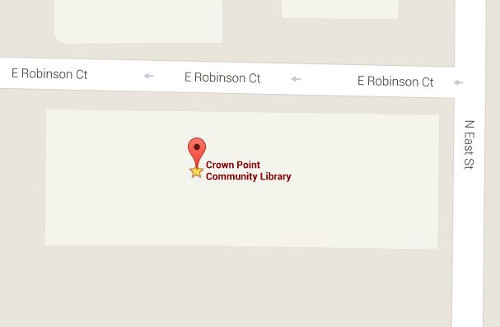Build a Better City
When Solon Robinson arrived at a rolling hill on October 31, 1834, all he and his companions saw were trees and prairies as far as the eye could see. He soon built his log cabin, and then other buildings were built where what was to become King’s Point and then Crown Point. A post office and government building were constructed as well as other structures around the highest point. That became the center of town, to be known as The Square. Although the original buildings no longer exist, many older buildings still grace our city’s streets.
You’ll notice several design styles throughout Crown Point; often the structure reflects the national design style of the time it was built. Most prominent is our “Grand Old Lady,” the Lake County Courthouse at the center of The Square. Built in 3 stages in both Romanesque and Georgian styles, the courthouse was originally built in 1878. It expanded in 1908 with the construction of two 2.5 story additions, and then again into what we know today in 1928 with the construction of two additional 1.5 story additions. The Lake County Courthouse was placed on the National Register of Historic Places in 1973.
The Queen Anne style was very popular during the Victorian Era and Crown Point has several outstanding examples, including the Holley House on the corner of South and East Streets and the Grant Root House and the Crawford-Winslow House, both on the west-side of the intersection of Main and South Streets. There are two excellent examples of the Tudor Revival style in The Whitaker House on South Main Street and the Maack House on South Court Street.
The broader Colonial style has two major design types. The Allman House (corner of East and Clark Streets) and the Root House (southeast corner of South and Court Streets) are fine examples of the Dutch Colonial style. The Colonial Revival style is illustrated by the Letz House on South Court Street and the old Community Center just north of The Square, which was originally built by the American Legion in the late 1920s, and then turned the building over to the School City. The School City used the facility as a gymnasium and social hall for the high school, as well as a recreation center and meeting place for the general community.
Crown Point’s oldest home, built in 1847, is an example of Greek Revival, the Wellington Clark house. The Clark Homestead was placed on the National Register of Historic Places in 2001. The Italianate style is seen in the Assessor’s Building, which is also known as the Hamacher House or the Marble House. Both are located just south of The Square on Court Street. The Hart House on South Main Street, as referred to as the Mayor’s Mansion, is the city’s best offering of the Free Classic style.
The only remaining example in Northwest Indiana of the Second Empire style is also its most famous, The Old Sheriff’s House on Main Street. It is probably most famous for the escape of John Dillinger in 1934. The Old Sheriff’s House and Jail served Crown Point and Lake County from 1882-1974, and was placed on the National Register of Historic Places in 1989.
The buildings and homes of Crown Point are as diverse as its history. Notice the architecture next time you walk or drive around the city. The details tell the story of how we became Crown Point.


